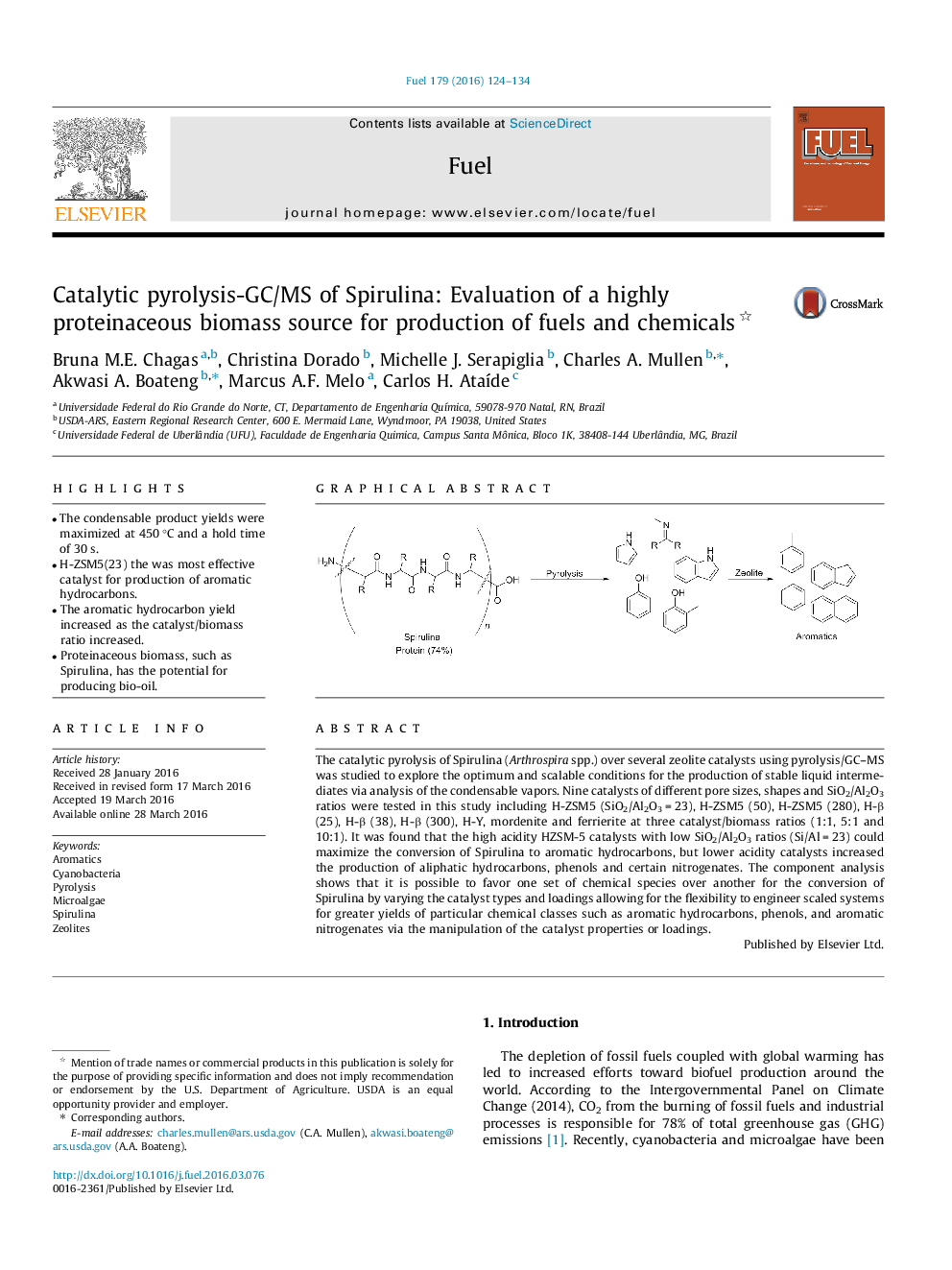| Article ID | Journal | Published Year | Pages | File Type |
|---|---|---|---|---|
| 205080 | Fuel | 2016 | 11 Pages |
•The condensable product yields were maximized at 450 °C and a hold time of 30 s.•H-ZSM5(23) the was most effective catalyst for production of aromatic hydrocarbons.•The aromatic hydrocarbon yield increased as the catalyst/biomass ratio increased.•Proteinaceous biomass, such as Spirulina, has the potential for producing bio-oil.
The catalytic pyrolysis of Spirulina (Arthrospira spp.) over several zeolite catalysts using pyrolysis/GC–MS was studied to explore the optimum and scalable conditions for the production of stable liquid intermediates via analysis of the condensable vapors. Nine catalysts of different pore sizes, shapes and SiO2/Al2O3 ratios were tested in this study including H-ZSM5 (SiO2/Al2O3 = 23), H-ZSM5 (50), H-ZSM5 (280), H-β (25), H-β (38), H-β (300), H-Y, mordenite and ferrierite at three catalyst/biomass ratios (1:1, 5:1 and 10:1). It was found that the high acidity HZSM-5 catalysts with low SiO2/Al2O3 ratios (Si/Al = 23) could maximize the conversion of Spirulina to aromatic hydrocarbons, but lower acidity catalysts increased the production of aliphatic hydrocarbons, phenols and certain nitrogenates. The component analysis shows that it is possible to favor one set of chemical species over another for the conversion of Spirulina by varying the catalyst types and loadings allowing for the flexibility to engineer scaled systems for greater yields of particular chemical classes such as aromatic hydrocarbons, phenols, and aromatic nitrogenates via the manipulation of the catalyst properties or loadings.
Graphical abstractFigure optionsDownload full-size imageDownload as PowerPoint slide
